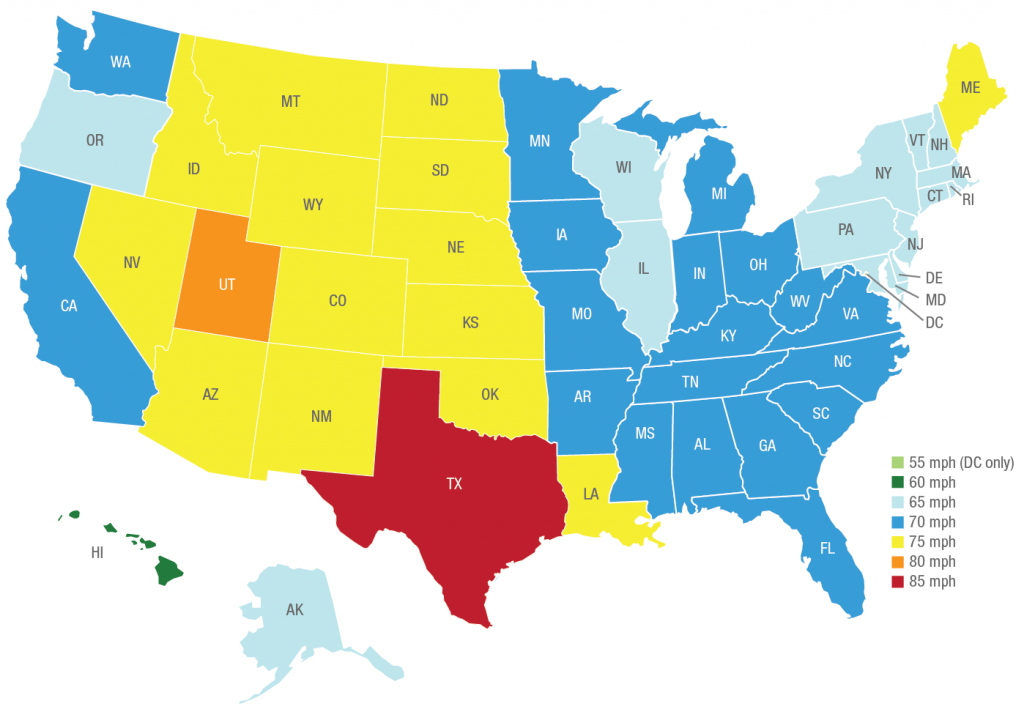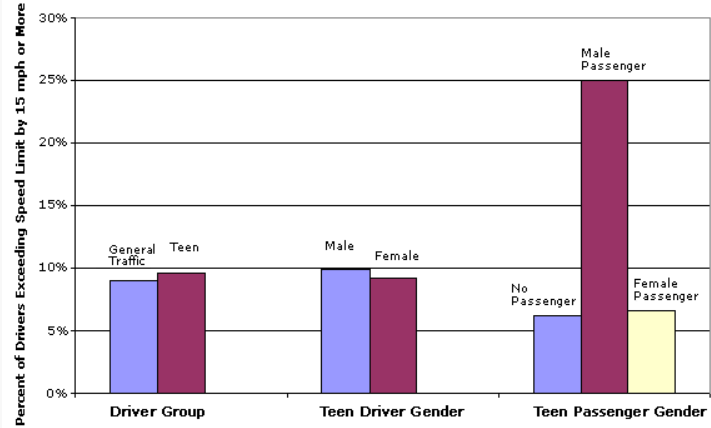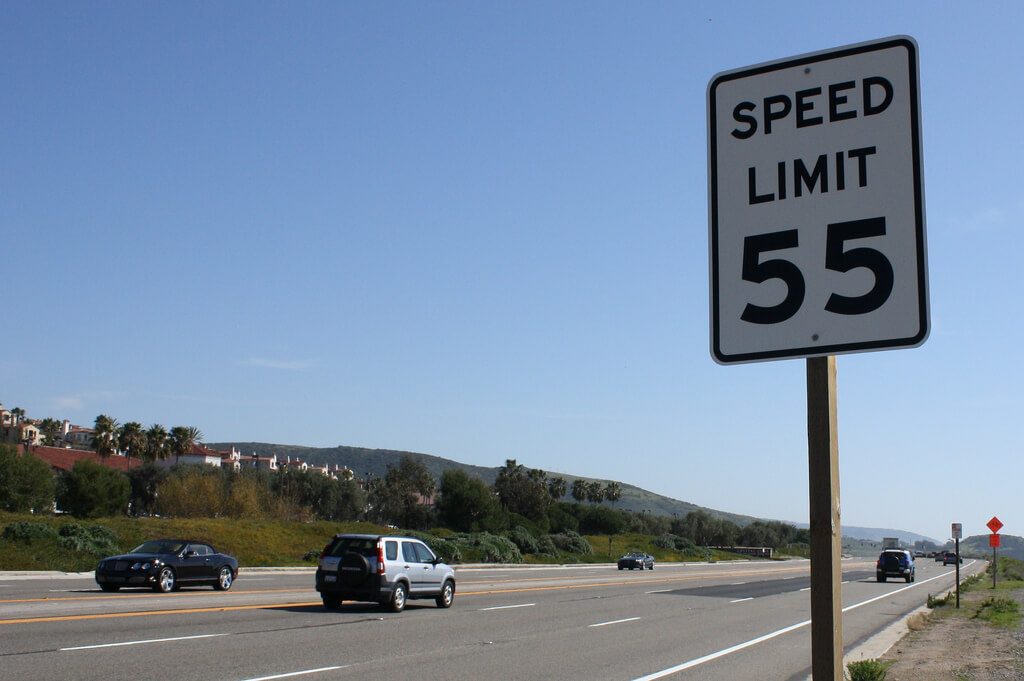Speeding is a factor in nearly 10,000 fatal crashes every year in the United States. And speeding is easily preventable. But despite this clear danger we can easily avoid, drivers continue to speed and drive well over the speed limit every day, causing serious accidents and fatalities.
As a driver, what can you do about speeding? The first step is understanding just how dangerous speeding is: Your crash risk increases incrementally for every mile per hour over the speed limit. We’ve included statistics to illustrate the deadly risk you take every time you speed.
But knowing why you shouldn’t speed is not enough. To be truly safe, you’ll need to know how to keep your speed in check and stay safe even when others around you are speeding. That’s why we’ve shared important tips for reducing your risk of danger from speeding.
With this guide, you’ll learn everything you need to know about how dangerous speeding is — and the steps you can take to avoid becoming a victim of excessive vehicle speed.
Understanding the Dangers of Speeding
Just how bad is speeding? These statistics share the number of fatal crashes with speed as a factor, illustrate who is most likely to speed, and what other factors are often at play when drivers are speeding dangerously — and causing fatal accidents.
- There were 9,262 speed related fatal crashes in 2014, 28 percent of all crashes in the United States. (National Highway Traffic Safety Administration)
- While any number of traffic fatalities due to speeding is too high, the rate of fatal traffic crashes caused by speeding has been steadily declining since at least 2005. (National Highway Traffic Safety Administration)
- Young male drivers are statistically more inclined to have fatal speeding accidents. The proportion of speed related crashes to all fatal crashes steadily decreases with age. While 36 percent of fatal accidents with 15-20 year old male drivers have speed as a contributing factor, fatal speeding accidents make up just 8 percent of total accidents for drivers 75 and older. (National Highway Traffic Safety Administration)
- Drivers in fatal crashes are often driving too fast for conditions. While only 18 percent of fatal speeding accidents occur in dry driving conditions, 40 percent happen while roads are icy or frosty. (National Highway Traffic Safety Administration)
- States with the most speeding related traffic fatalities are Texas (1,284), California (991), and Pennsylvania (509). (National Highway Traffic Safety Administration)
- States with the highest percentage of speed related traffic fatalities are the District of Columbia (52 percent), New Hampshire (49 percent), and Pennsylvania (43 percent). (National Highway Traffic Safety Administration)
- Accidents happen more often on local roads than interstates, freeways, and expressways. Interstate and non interstate freeway and expressway fatal speeding accidents make up just 17% of the total. Non interstate local, principal arterials, and minor arterials account for 63 percent of speed related traffic crash fatalities. (National Highway Traffic Safety Administration)
- Your crash risk increases incrementally for every mile per hour over the speed limit. (State Farm)
- Half of teen drivers say they sometimes drive ten mph over the speed limit. (State Farm)
- Speeding is the leading aggressive driving behavior, playing a role in 19 percent of fatal crashes. It is the most prevalent factor in deadly crashes. (Insurance Information Institute)
- Speeding costs almost exactly as much as drunk driving. Drunk driving costs $59.4 billion (21 percent of economic costs), while speeding costs $59.1 billion (21 percent of economic costs). (Insurance Information Institute)
- In 2016, speeding was a contributing factor in 28 percent of all traffic fatalities. In that same year, 36 percent of 15 to 20 year old male drivers involved in fatal crashes were speeding at the time of the crash. In that same year, only 20% of 15 to 20 year old female drivers were speeding at the time of the crash. (Insurance Information Institute)
- Forty-one percent of speeding drivers in fatal crashes have a blood alcohol content of 0.08 or higher than 17 percent of non speeding drivers in fatal crashes.
- Speeding costs almost exactly as much as drunk driving. Drunk driving costs $59.4 billion (21 percent of economic costs), while speeding costs $59.1 billion (21 percent of economic costs). (Insurance Information Institute)
- Increases in speed limits lead to increased danger. Increases in speed over two decades have cost 33,000 lives in the United States — canceling out about the same amount of lives saved by frontal airbags each year. (Insurance Institute for Highway Safety)
- Six states have 80 mph speed limits, and there are some roads in Texas where drivers can legally drive up to 85 mph. (Insurance Institute for Highway Safety)

SOURCE: IIHS
- Driving on a road with a speed limit of 45 mph or higher is one of the top three predictors of fatality. (State Farm)
- Teens are more likely than older drivers to speed. The presence of a male teenage passenger increases the likelihood of speeding. (Centers for Disease Control and Prevention)
- Having multiple teenage drivers in a vehicle makes the driver as likely to cause a fatal crash as alcohol impaired driving. (State Farm)
- Thirty-five percent of male drivers between 15 and 20 years of age involved in fatal crashes were speeding at the time of the crash. Twenty-five percent had been drinking. (Centers for Disease Control and Prevention)

SOURCE: NATIONAL INSTITUTES OF HEALTH
- Speed significantly influences the risk of severe injury or death for pedestrians hit by vehicles. At 25 mph, pedestrians have a 90 percent chance of avoiding death. But at 42 mph, they’re just 50 percent likely to avoid severe injury or death. At 50 mph, the average risk of death goes up to 75% and reaches 90% at 58 mph. (AAA Foundation)
Why Drivers Speed

PHOTO BY FLICKR USER LOFINK
If speeding is so dangerous, why do people continue to speed? There are several reasons, but the most prevalent one is that they simply don’t believe in them — and they don’t think they’ll get caught. Understand the motivation behind speeding here.
- They don’t believe the speed limit is necessary
- They don’t think they’ll get caught
- They want to reach their destination quicker
- Police often don’t enforce speed laws unless drivers exceed 5 to 10 mph above the speed limit
- They feel confident in their driving skills and believe they can safely drive above the speed limit
- They don’t care about traffic laws
- They are impatient or in a bad mood
- They don’t realize their driving is dangerous
- They’re not monitoring their speed
- They want to drive their fast car
- Traffic flow is going faster than the speed limit
- They don’t know the speed limit
- They’re driving aggressively
- They feel pressured to keep up with other drivers
- They don’t want to be behind you
Tips for Reducing Your Danger of Death or Injury from Speeding

PHOTO BY FLICKR USER STIGNYGAARD
Speeding is dangerously deadly, but we don’t always realize we’re doing it. You may get distracted or simply caught up in the flow of traffic before you realize that you’re speeding along at a high rate. Follow these tips to avoid speeding and become a safer driver.
- Use cruise control: Using cruise control can save you effort and energy while maintaining a more consistent safe speed. Cruise control keeps your vehicle at the speed you set it at. While it’s not useful for surface streets or traffic, cruise control can be invaluable if you’re on a long road trip, especially if you need to watch your speed.
- Give yourself time to drive: Speeding often happens when drivers are running late or are in a hurry. It’s not always easy, but leaving a few minutes early or at least on time can alleviate your stress and make it easier to avoid feeling like you need to speed to make it on time. Are you already running late? Before you head out, call or send a text message to let them know you’re late so you’ll be more relaxed.
- Note speed limits wherever you drive: It’s all too easy to go with what feels comfortable and not worry about what the speed limit sign says. But speed limits are set with safety in mind, factoring safety and road conditions. Make sure you’re paying attention to and following speed limits.
- Don’t keep up with speeders: Even if you’re obeying the speed limit, others may not. Resist the temptation to keep up with them and avoid letting them influence your driving habits to get you to go faster. Simply let them go around.
- Don’t be intimidated by tailgaters: Some speeders will even ride your tail in an attempt to intimidate other drivers into driving faster. Don’t let this happen. Keep a safe speed and allow speeding tailgaters to go around you, or move over to a right lane so they can easily pass you on the left.
- Keep an eye out for speeding vehicles: Speeders going faster than you and especially more quickly than the flow of traffic are a dangerous factor on the road. You’ll need to watch out for them and be on high alert for hazards any time you notice a speeding vehicle. It’s best to avoid them and stay out of their way as much as possible.
- Be mindful of the music you’re listening to: Hard rock or fast paced music might encourage you to drive faster than you should. Listening to classical or light music can help you slow down.
- Drive a slower car: If you’re driving a performance vehicle, you’re probably predisposed to speeding. But in a slower car, faster speed simply doesn’t come as quickly, making it easier for you to manage your speed.
- Stay with the flow of traffic: Generally, traffic flows at a safe rate and it’s best to stay at about the same speed as everyone else. Of course, if everyone else is severely exceeding the speed limit, it’s a good idea to slow down and let them pass.
- Always stay aware of the situation: If traffic is slowing down ahead of you, there’s probably a good reason. You should slow down, too, avoiding any hazards up ahead.
